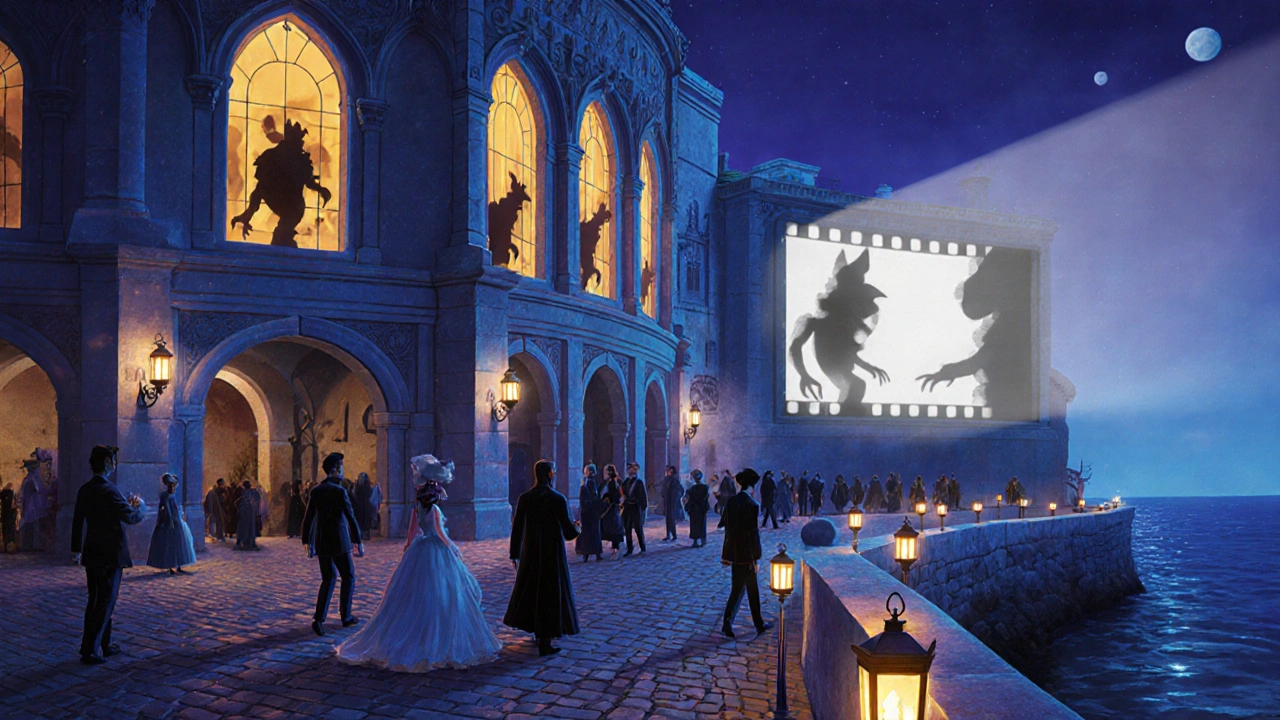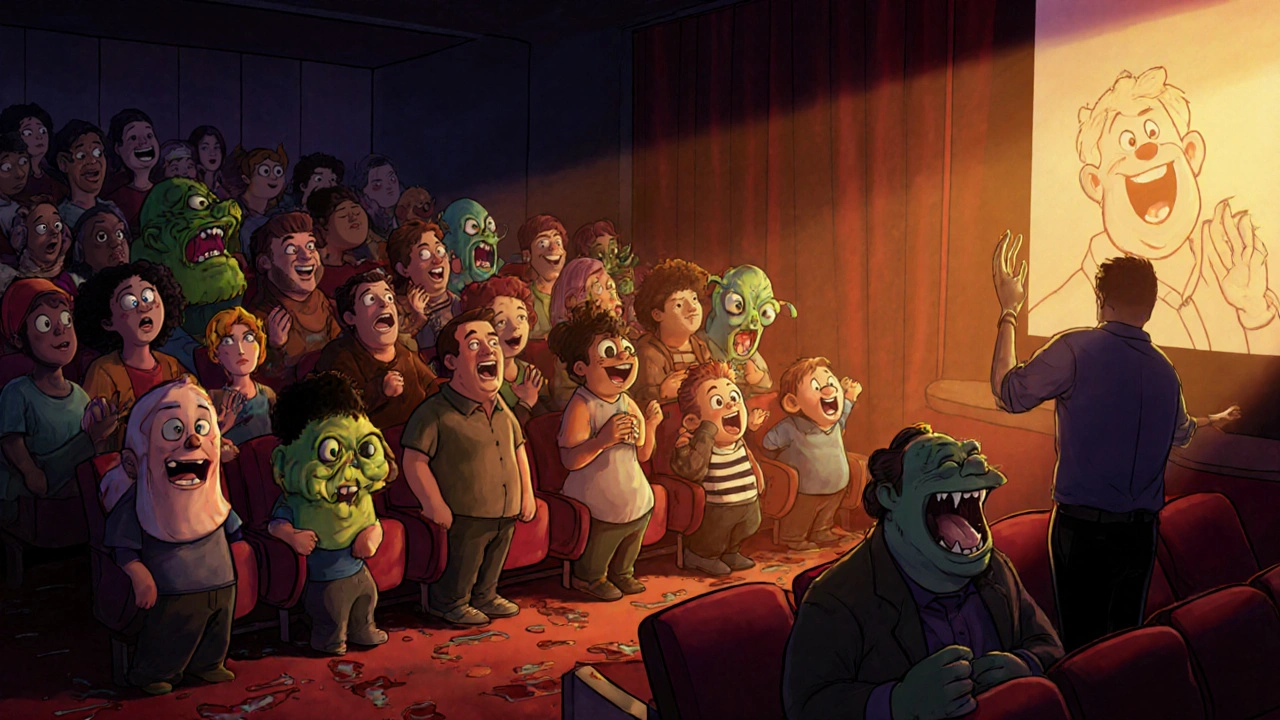Horror Festivals Are Where Real Horror Lives
Most people think horror movies are best watched alone at night with the lights off. But the real heartbeat of horror? It’s in packed theaters, sticky floors, and crowds screaming together. Horror festivals aren’t just screenings-they’re rituals. And if you want to see what’s next in the genre, you need to be where the blood, sweat, and applause are happening. Fantastic Fest in Austin and Sitges in Spain aren’t just big names-they’re the two most important breeding grounds for horror innovation today.
Fantastic Fest: The Wild Heart of American Horror
Fantastic Fest, held every September in Austin, Texas, is the most unpredictable horror festival on the planet. It started in 2005 as a small gathering of genre fans and grew into a 10-day explosion of gore, dark comedy, and mind-bending terror. Over 100,000 people attend each year. The lineup doesn’t just show horror-it pushes it. In 2023, the festival premiered "The Last Voyage of the Demeter", a claustrophobic vampire tale that broke box office records for indie horror. But it’s the midnight slots that define the experience.
Imagine watching a film where the audience is so terrified they break into spontaneous applause after a jump scare. That’s Fantastic Fest. It’s not about polish. It’s about raw, unfiltered fear. Directors come here to test their wildest ideas. A film that gets a standing ovation at Fantastic Fest can go from obscurity to cult status overnight. The festival’s "Secret Screenings"-where the title isn’t revealed until the lights go down-have become legendary. In 2022, a film called "The Nest" screened in secret. No one knew what it was. By the end, half the crowd was crying. The next day, it sold to Netflix for $8 million.
Sitges Film Festival: Europe’s Dark Soul
Just across the Atlantic, Sitges, Spain, holds its own. The Sitges Film Festival, founded in 1968, is the oldest genre film festival in Europe. It’s held every October in a coastal town that looks like it was carved out of a Gothic novel. The festival focuses on fantasy, horror, and science fiction-but horror is its spine. Unlike Fantastic Fest, Sitges leans into artistry. It’s where directors like Guillermo del Toro, Ari Aster, and Robert Eggers first gained international attention.
In 2024, the Grand Prize went to "The Quiet Ones", a slow-burn psychological horror shot entirely in black-and-white. The film had no score. No jump scares. Just silence and dread. It won because it made the audience feel something they couldn’t name. Sitges doesn’t care if your film has a $5 million budget. It cares if it haunts you. The festival’s "New Visions" section is where you’ll find the most daring work: films made by first-time directors, often with budgets under $50,000. Many of them later become award contenders.

What Makes a Horror Festival Different From a Regular Movie Theater?
It’s not just the films. It’s the energy. At a regular theater, you watch a horror movie. At a horror festival, you live it. The crowd reacts. They gasp. They laugh nervously. They throw popcorn at the screen during bad effects. You’ll see people wearing handmade monster masks. You’ll hear strangers whispering theories about the ending. The directors often show up. You can ask them questions after the screening. Some even stay for the next showing.
Fantastic Fest has a "Festival Bar" where filmmakers and fans drink together until 3 a.m. Sitges has rooftop parties with live bands playing covers of horror movie themes. These aren’t marketing gimmicks-they’re essential. Horror thrives on community. A film that terrifies one person might be funny to another. But in a crowd? The fear multiplies. That’s why horror festivals are where new subgenres are born.
Genre Discoveries: What’s Next in Horror?
If you want to know where horror is headed, look at what’s winning at these festivals. In 2024, three trends stood out:
- Domestic Horror: Films like "The House That Jack Built" and "The Basement" focus on abuse, isolation, and family trauma-not ghosts or monsters. The scariest thing isn’t in the closet. It’s at the dinner table.
- Body Horror Revival: After years of jump-scare flicks, audiences are craving visceral, physical terror. "Flesh & Bone", a 2023 Sitges winner, showed a woman’s skin slowly peeling off as she tried to escape an abusive partner. It won for its practical effects and emotional depth.
- Indigenous Horror: Films from Australia, Canada, and New Zealand are bringing ancestral myths to the screen. "The Hollow One", a 2024 Fantastic Fest entry, used Aboriginal folklore to tell a story about a child who sees spirits no one else can. It’s not about scares. It’s about cultural memory.
These aren’t just trends. They’re signs of a genre maturing. Horror is no longer just about monsters under the bed. It’s about what’s under the skin-of society, of families, of history.

How to Get Into These Festivals (Even If You’re Not a Pro)
You don’t need to be a filmmaker to attend. Both festivals welcome fans. Tickets for Fantastic Fest start at $15 for single screenings. A full pass runs $350. Sitges is cheaper-single tickets are around €12, and a full pass is €180. Both offer student discounts.
But here’s the trick: apply early. Both festivals sell out fast. Fantastic Fest opens ticket sales in July. Sitges in August. Sign up for their newsletters. Follow them on Twitter. Some screenings are free if you volunteer. Sitges has a "Fan Crew" program-you help with ushering, and you get a pass. Fantastic Fest lets fans submit short films for their "Underground" section. Even if your film doesn’t get in, you’ll meet people who make movies for a living.
What to Bring (And What to Leave at Home)
At Fantastic Fest, wear comfortable shoes. You’ll walk miles between theaters. Bring a reusable water bottle. The Texas heat in September is brutal. Pack a light jacket-air conditioning in theaters is freezing. Bring a notebook. You’ll want to write down titles you hear whispered in line.
At Sitges, bring a Spanish phrasebook. Not everyone speaks English. Learn "Gràcies" (thank you) and "On és el lavabo?" (Where’s the bathroom?). The town is small. You’ll walk everywhere. Don’t bring expensive gear. Theft isn’t common, but crowds are dense. Leave the camera at home unless you’re shooting for fun. The real memories? They’re in your head.
Why This Matters for Horror Fans
Most horror movies you see on streaming services are safe. They’re made to appeal to the broadest audience. They follow formulas. They recycle tropes. But the films at Fantastic Fest and Sitges? They’re dangerous. They break rules. They make you uncomfortable. They linger.
If you’re tired of the same recycled slasher flicks, these festivals are your escape. They’re where horror stays alive. Where new voices rise. Where the genre evolves. You don’t need to go every year. But if you go once? You’ll never watch horror the same way again.
Are Fantastic Fest and Sitges only for horror fans?
No. While horror is the main focus, both festivals include fantasy, sci-fi, and dark comedy. If you like strange, bold storytelling-whether it’s about aliens, demons, or a talking refrigerator-you’ll find something that grabs you. Many people go for the atmosphere, the parties, or the chance to meet filmmakers-not just the scares.
Can I submit my own horror short film?
Yes. Both festivals have open submission windows. Fantastic Fest accepts shorts through FilmFreeway until May. Sitges has a "New Voices" section for first-time directors. Entry fees are around $30-$40. You don’t need professional equipment. Many award-winning films were shot on iPhones. What matters is originality and execution.
Which festival is better for discovering new directors?
Sitges has a stronger track record for launching international auteurs. Directors like Robert Eggers and Jennifer Kent premiered here before going mainstream. Fantastic Fest is better for finding wild, underground talent-often from the U.S. or Asia-who make films outside the studio system. If you want art-house horror, go to Sitges. If you want raw, unpredictable energy, go to Fantastic Fest.
Do I need to speak Spanish to go to Sitges?
No. Most screenings have English subtitles, and the festival staff speak English. But learning a few basic phrases helps. Locals appreciate it. And you’ll get better food recommendations from vendors who don’t speak English. The town is very tourist-friendly, but the real magic happens in the quiet corners-where locals and fans chat over wine.
Are these festivals worth the cost?
If you love horror, yes. A single ticket is cheaper than a new Blu-ray. A full pass gives you access to 30+ screenings, Q&As, panels, and parties. You’ll see films no one else has. You’ll meet people who become lifelong friends. You’ll leave with a list of 10 movies you didn’t know existed-and a new way to think about fear. No streaming service can give you that.

